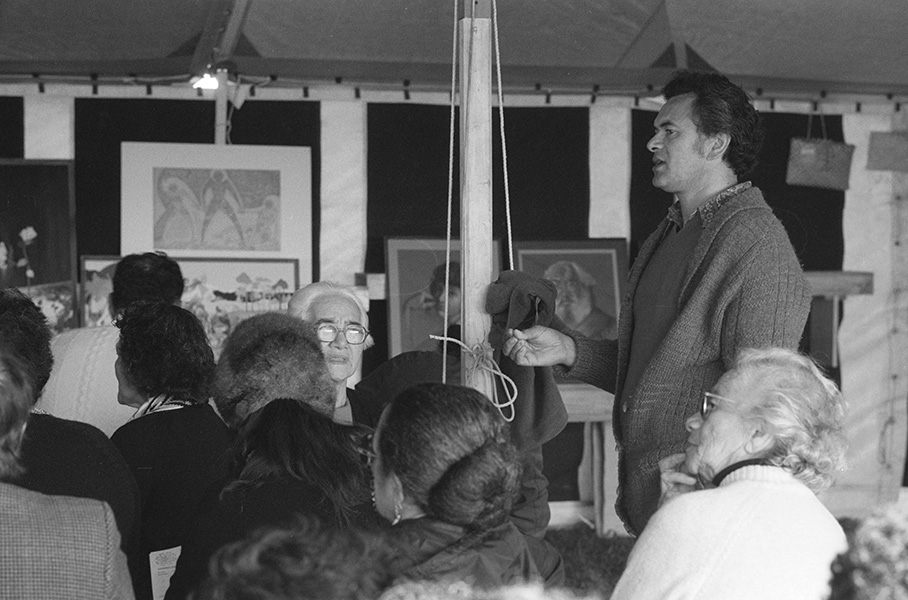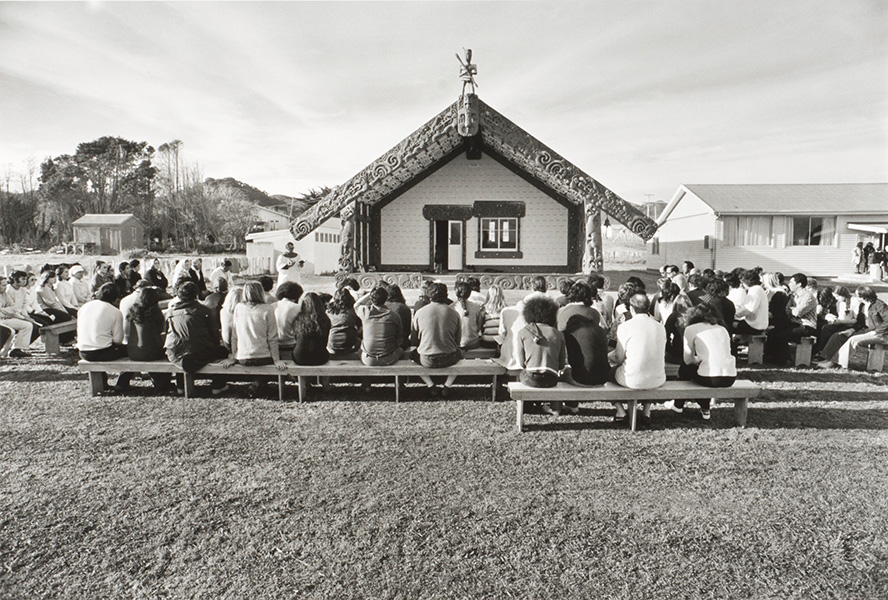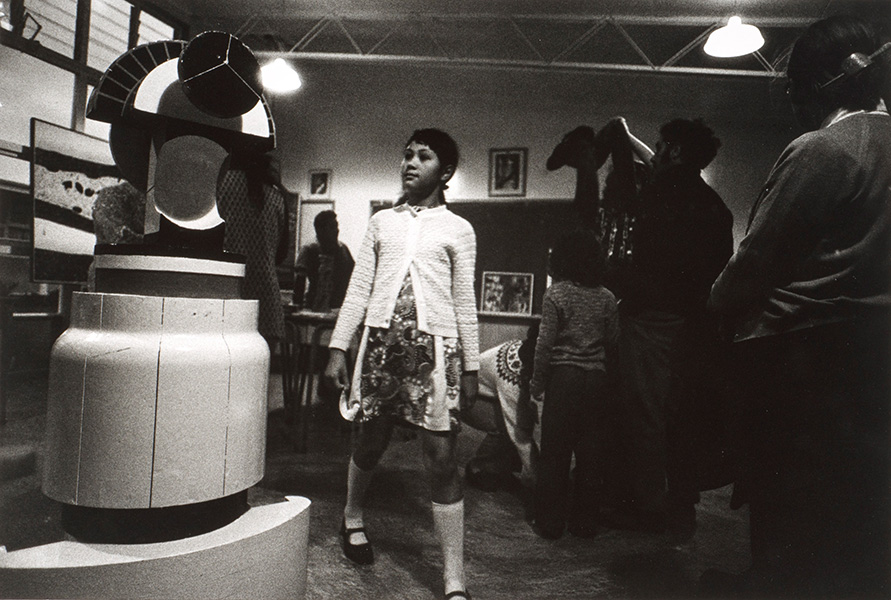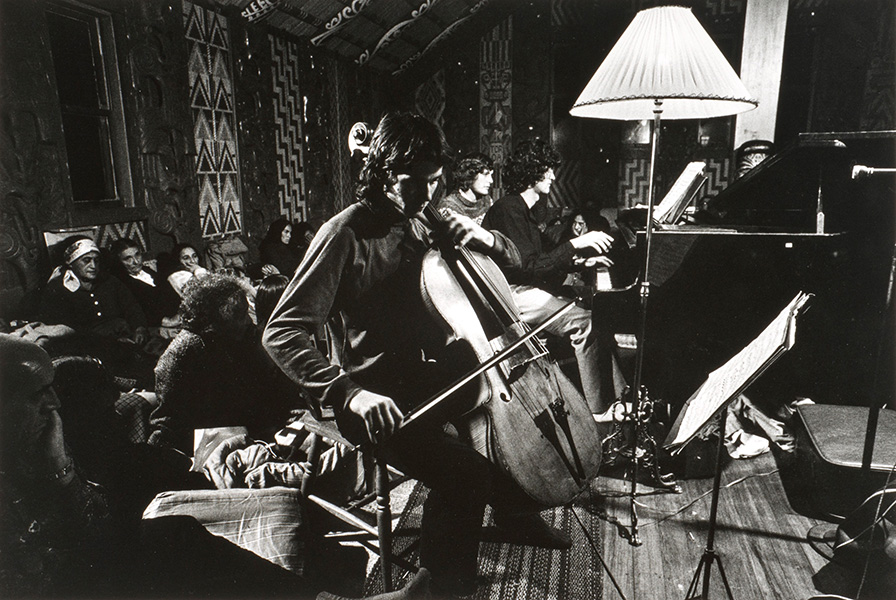This was the start of a movement which quickly spread with an immediate impact culminating some years later in Te Māori exhibition going offshore to The Metropolitan Museum, New York.
A condition of The New Zealand Maori Artists and Writers Association Hui was for each artist to submit an original work either visual, performance, literary, in music, song, dance or photographic.
I was admiring works by artists and one a print by Whiting. The wharekai (dining hall), overnight had become a veritable art gallery for the Hui. Without knowing that Whiting was behind me, I whispered to Rei Hamon, ‘… wouldn’t mind one of Cliff’s gems.’ Overhearing me, Cliff said, ‘… it’s yours.’
Some years later when I visited him I gave him a copy of my poem, Jonathan Blue about a seagull with a broken wing struggling against overwhelming odds. The mark of the man, he immediately treated my modest offering as a taonga (a precious gift).
Whiting was a part of a younger generation of Māori who, in the seventies and eighties became a political and cultural watershed for Māori society arguably the first visible start of the ‘contemporary Māori renaissance’, a time of urban adjustment and increasing political activism. Nga Tamatoa defied the government on many issues notably the breaches of the Treaty. Te Reo (the Māori language) was another. Theirs was the strident banner-waving voice of a younger politically-minded rangatahi (youth), a voice calling on government to ‘… honour the Treaty’. Whiting was one of a new wave of leaders who had emerged from the relatively polite concerns raised publicly by post-war Māori leaders, now replaced with the assertive, confrontational politics in which the key institutions of state – parliament, the courts, the education system and the media were challenged to argue justice for Māori. Whiting was in that vanguard.
He leaves a rich and evocative legacy to a nation mourning his flight of no return. And on his return home, we as a nation will stand in awe of the work of a hero and a man of legendary strength. Like the totara he had a big heart, stood tall in the forest of Tāne, a man who will be remembered as a giving man.
The outpouring of aroha is understandable as we follow his flight from Waitangi, across Pewhairangi, home to Te Kaha and beyond. A Māori, a Māori New Zealander who straddled the worlds of the avante garde of international art, yet kept the integrity of the rich Māori dimension of wairua, literature and cosmology; a silent spirituality at work. He was able to fuse together the old and new worlds in balance, day and night, Māori and Pākehā, young and old but also evoked the passions of an international following.
The people of Northland referred to him as ‘He kuaka’, the godwit of a single flight rising above the Parengarenga – the white sands as he showed the way ahead. This metaphor is for the journey, his endurance and courage and the fortitude of the myriad tiny birds that struggle against overwhelming odds.
Right now though, thousands of these wading birds are gathering in another hemisphere poised for a direct flight back home when we’ll see them land at Parengarenga to flock after their prodigious journey and tiny hearts and great spirit, from the other end of the world return home.
The resurrection of spent meeting houses is quintessential Whiting. His work reminds us of a giant tukutuku with its never-ending warps each strand like the strings of a banjo, linking to the many dimensions of poetry, dance, ecology and cosmology; weaving darkness and light, above with below, things internal and external and the songs of home forever effervescent in our hearts of a ‘sweet prince and the flight of angels that sing thee to thy rest,’ …ah, home.
We are left, not bereft but a nation richer as buses, vans and cars land on his Te Kaha Marae like migrating birds flocking home in adoration and homage.
Home.
A lone bird appears on the horizon
Others followed to flock to take wing to circle
And once in flight…to soar
Goodbye Cliff, e hoa haere.



